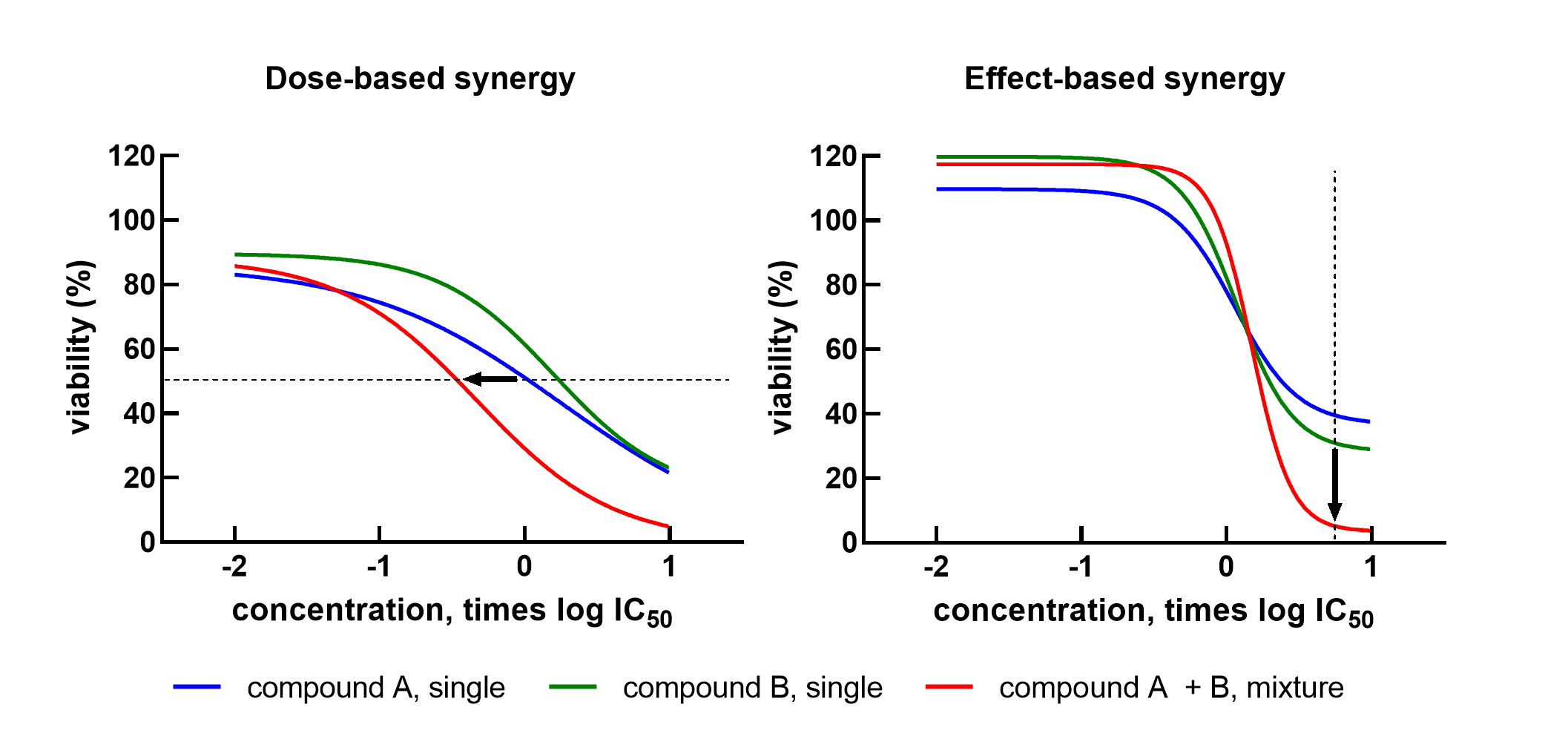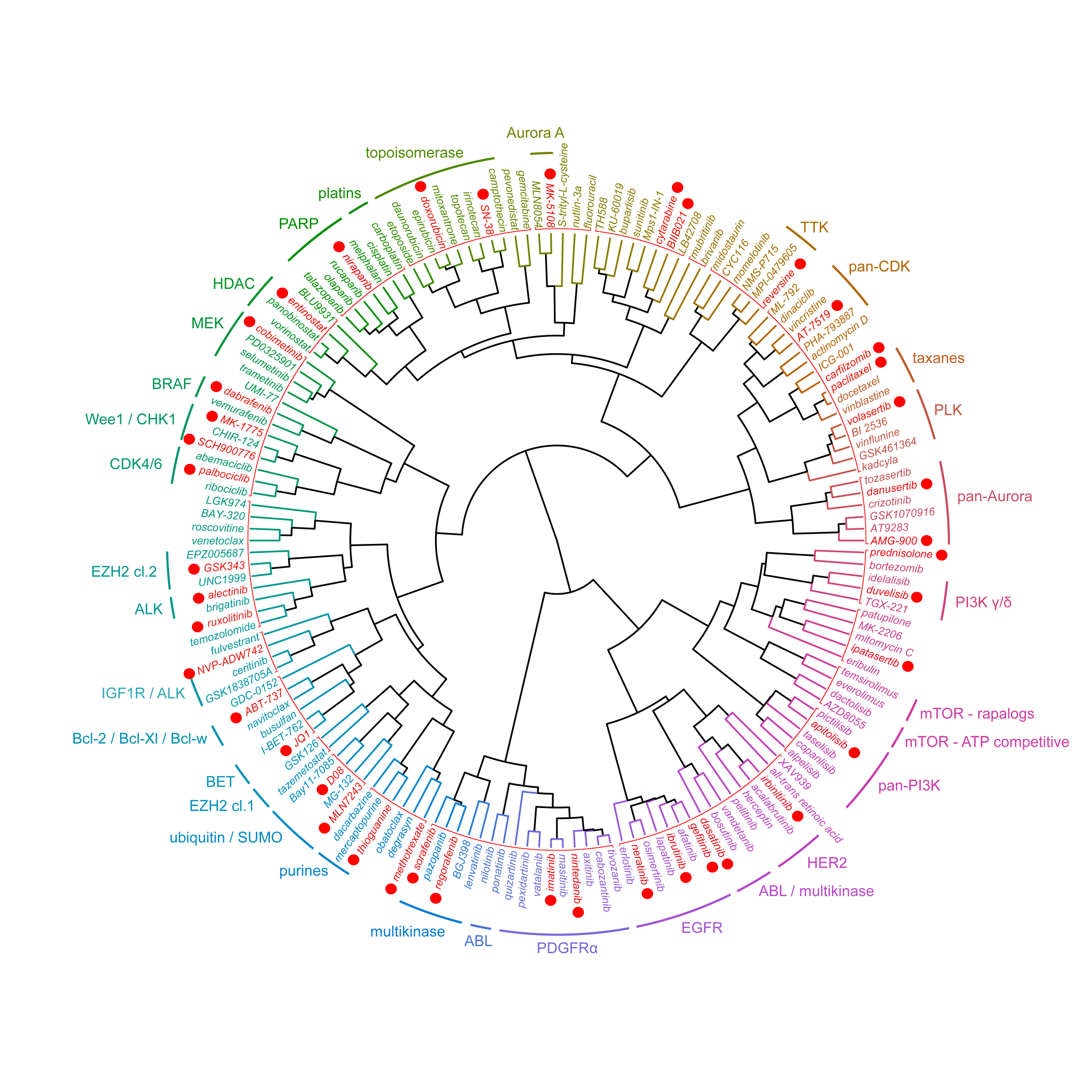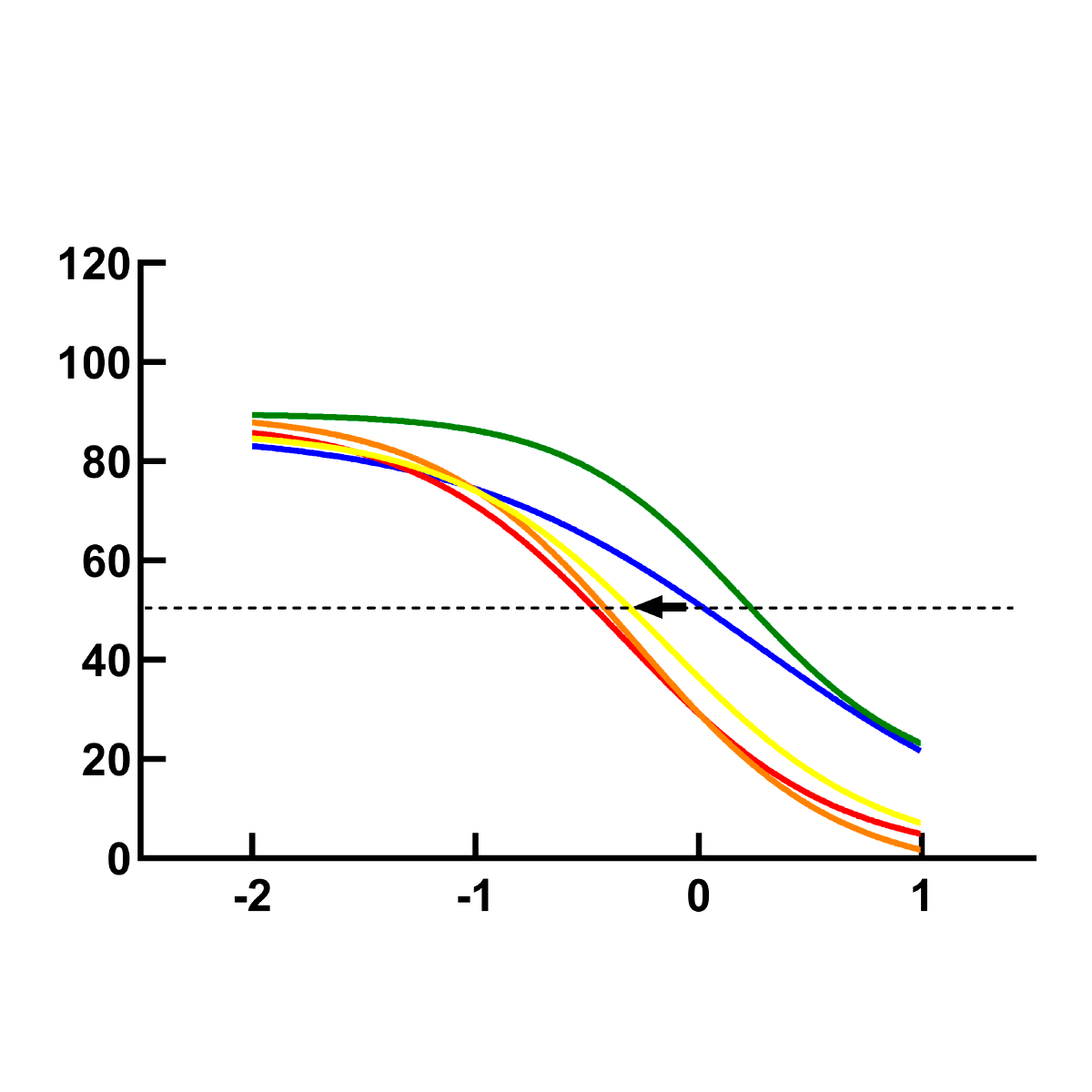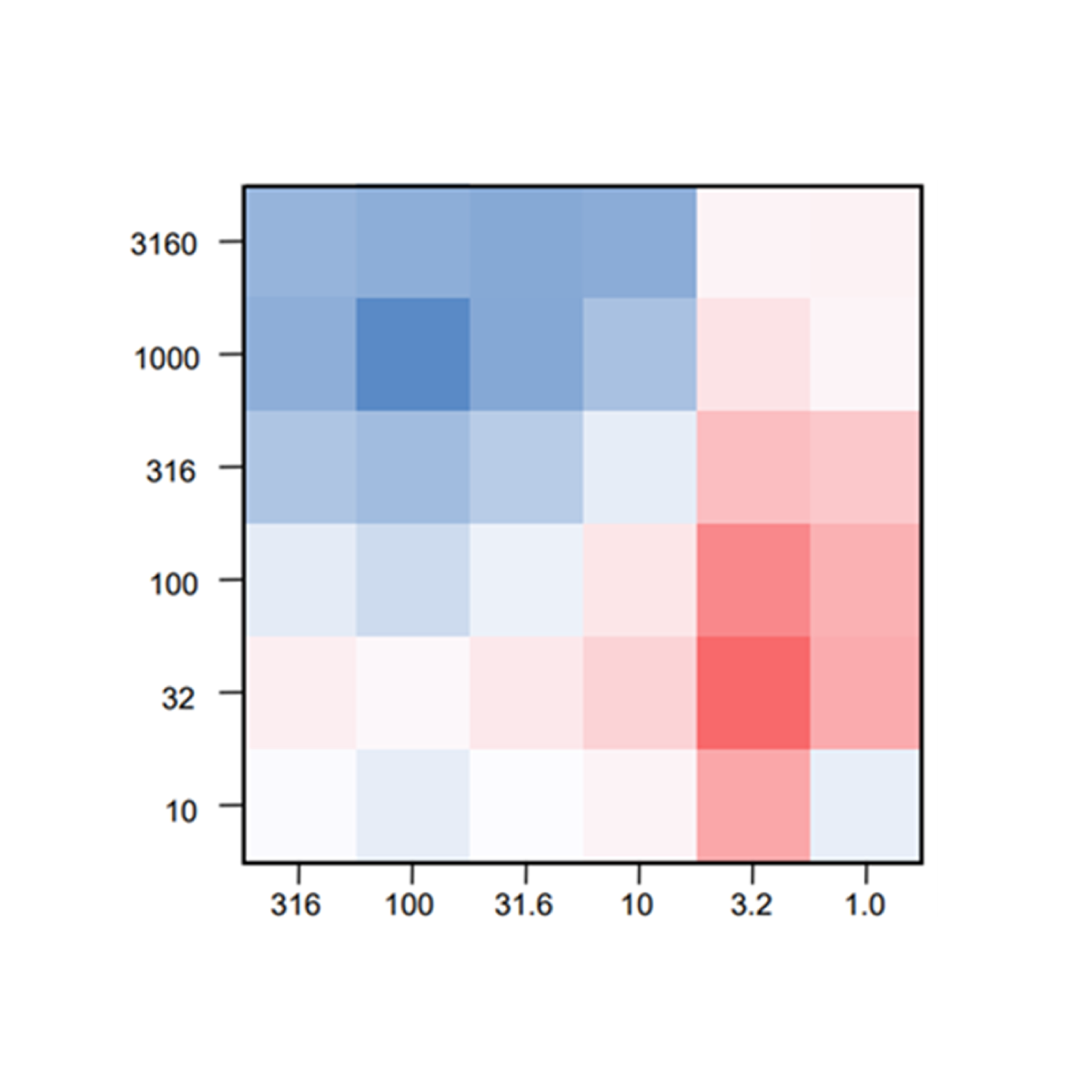Synergy Explained
Combination therapies are a treatment modality in which two or more therapeutic agents are combined. More than sixty years ago, the first combination studies with cancer drugs were performed in pediatric leukemia patients with the aim to prolong remission. Nowadays, many cancer treatments are combination therapies. Combining drugs can improve therapy response, prevent drug resistance, or reduce toxicity.
Dose-Based vs. Effect-Based synergy
Synergistic effects are evaluated by two approaches: dose-based synergy and effect based synergy. Dose-based synergy means that the dose of at least one of the drugs can be decreased in the combination to achieve the same effect. In an effect-based synergy, an increase in maximum effect is observed in the combination compared to the maximum effect levels of the single agents.
Different Platforms to Study Synergistic Effects
To identify the right combination of your lead compound with standards of care or new drugs, Oncolines offers three different synergy platforms. The SynergyScreen™ is a high-throughput screen in which your novel drug will be screened against an exemplar library of 42 selected reference anti-cancer agents. This unbiased approach helps you with exploring possible synergistic drug groups of your lead compound. Once you have an idea about the synergistic partners of your drug, synergistic effects can be confirmed in either the SynergyFinder™ or the combination matrix. In SynergyFinder™, equipotent mixtures of two (or more) drugs are tested in three fixed ratios (1:1, 4:1 and 1:4) based on IC50 values. Synergy is evaluated by curve shift analysis and calculation of the Combination Index (CI). In the combination matrix, two compounds are combined in six points dilution range. Synergy is evaluated by calculating the Bliss score. Learn more about the different platforms on the platform specific pages.





